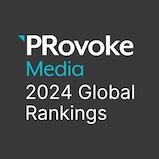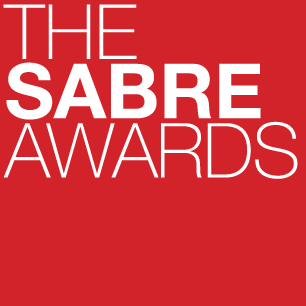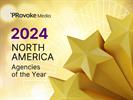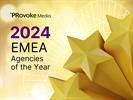
 Podcasts
PodcastsCatch the latest PR news & updates with PRovoke Media's PR Podcasts. Lifting the lid on key industry stories & trends, join our listeners of PR podcasts today.
 Videos
VideosLatest video interviews and campaigns from PRovoke Media, previously known as the Holmes Report.
Long-form journalism that analyzes the issues, challenges and opportunities facing the business and practice of PR.
 Profiles & Interviews
Profiles & InterviewsExplore PR profiles and interviews with leaders from the marketing and PR worlds.
 Crisis Review
Crisis ReviewPR Crisis & Business Crisis review. PRovoke Media's annual analysis of the top reputation crises to rock the corporate sector. Read on here.
 Coronavirus
CoronavirusPRovoke Media's coverage of the Covid-19 crisis, focusing on corporate communication, public affairs & PR industry fallout.
 Trend Forecasts
Trend ForecastsPRovoke Media's PR Trends round up. PRovoke Media's annual forecast of PR trends and news that will impact the PR world in the year ahead...
 Social & Digital
Social & DigitalDedicated to exploring the new frontiers of PR as it dives deeper into social media, content and analytics.
 Technology
TechnologyOur coverage of key technology PR trends and challenges from around the world of digital communications.
 Consumer
ConsumerFrom brand marketing to conscious consumerism, coverage of key marketing and PR trends worldwide.
 Employee Engagement
Employee EngagementPRovoke Media's coverage, analysis and news around the rapidly-shifting area of employee engagement and internal communications.
 Sports Marketing
Sports Marketing Sports PR news, diversity & inclusion trends, views and analysis from PRovoke Media. Subscribe today for the very latest in the world of sports communications.
 Global PR Agency Rankings
Global PR Agency RankingsPRovoke Media's definitive global benchmark of global PR agency size and growth.
Enter PRovoke Media's 2024 Global 250 Agency Ranking and/or our Agencies of the Year competitions now.
 Agencies of the Year
Agencies of the YearPRovoke Media's annual selections for PR Agencies of the Year, across all of the world's major markets.
 Innovator 25
Innovator 25PRovoke Media profiles marcomms innovators from across North America, EMEA and Asia-Pac.
 Creativity in PR
Creativity in PRIn-depth annual research into the PR industry's efforts to raise creative standards.
 Asia-Pacific Communication Index
Asia-Pacific Communication IndexAPACD/Ruder Finn annual study of Asia-Pacific in-house communications professionals.
 SABRE Awards
SABRE AwardsThe world's biggest PR awards programme, dedicated to benchmarking the best PR work from across the globe.
 PRovokeSummit Global
PRovokeSummit GlobalThe biggest PR conference of the year, a high-level forum designed to address the critical issues that matter most.
 PRovoke Media Regional Series
PRovoke Media Regional SeriesA global network of conferences that explore the innovation and disruption that is redefining public relations.
 Agencies of the Year
Agencies of the YearUnrivalled insight into the world's best PR agencies, across specialist and geographic categories.
 Roundtables
RoundtablesOur Roundtables bring together in-house comms leaders with PR firms to examine the future of communications.
 Agency Playbook
Agency PlaybookThe PR industry’s most comprehensive listing of firms from every region and specialty
.jpg) All Jobs
All JobsFind the latest global PR and communications jobs from PRovoke Media. From internships to account executives or directors. See all our PR jobs here.
PRovoke Media's editorial series published in collaboration with partners.

The ideal entry contains a summary of the assignment as well as a sample of the work. Because there are many ways to tell a good public relations case story, we have relaxed our rules when it comes to summary formatting.
Many people will choose to provide the traditional two-page written summary, but others are free to use Powerpoint or similar (we suggest 6-10 slides as an ideal length). You can even provide us with a video if you think that gets your story across in the most compelling fashion.
Whatever format you choose, the summary should include a brief description of the assignment; the challenge it presented; any research and insight that contributed to the creative strategy; details of the creative execution; and the results.
The Latin American SABRE Awards will accept entries in English, Portuguese and Spanish. The main summary may be presented in any of these languages. However, all entries should include a single paragraph in Englsh explaining why the campaign is worthy of an award.
The sample of the work will vary from category to category, but can include (but is not limited too) printed materials such as white papers or company publications; links to online content such as websites and videos; sample ads, infographics or web pages; mobile applications. Content may be uploaded via our SABRE Awards website, linked to in the summary, or when hard copy is necessary mailed to our offices.
Most awards competitions look for the same things—big, bold creative ideas; flawless execution; an impact on business results. We value those things too, but the In2 SABRE judges will ask several additional questions as they review your entries:
1. Did your creative solution take courage? Was the agency brave to suggest the strategy it did? Was the client brave to agree to it? Courage comes in many forms—admitting a mistake, fighting for an unpopular principle, taking a creative risk, breaking a taboo.
2. Was it authentic? Did the core creative idea seem to arrive organically from the DNA of the company? Was it a true reflection of the organization’s mission, its vision, its values? Did the explicit or implicit story it told about the company fit with the way customers, employees and community actually experience the company and its brands?
3. Was it engaging? In the past, it might have been enough for a public relations campaign to deliver a message. But the best campaigns today go beyond that, prompting engagement, encouraging the audience to respond both emotionally and in some tangible way: joining the conversation, participating in the debate, offering feedback, getting involved in a cause or issue.
4. Was it inclusive? The best public relations campaigns take into account the media consumed by a diverse public and makes an effort to engage with people of all races, cultures, and orientations. Our judges will look for evidence that some thought was given to issues of diversity and inclusion in the planning and execution of winning campaigns.
5. Was it shareable? Public relations campaigns have always been about persuading people to share information. In the past, it was typically a journalist sharing with his or her readers. But today it can involve almost any audience—bloggers, influencers, opinion leaders, ordinary people—sharing with their friends, via social media or good old-fashioned conversation, amplifying the message and giving it credibility and immediacy.
6. Was it sticky? Did the campaign lead to a single transaction or did it contribute toward a lasting relationship? Some campaigns are fleetingly amusing, a momentary distraction; others leave a lasting impression about the company or the brand, usually by making an emotional connection, convincing stakeholders that the company genuinely cares about something close to their hearts.
7. Was it ethical? Honesty has always been important. It is even more important today, because in an age of radical transparency any dishonesty—and manipulation or deceit—will be discovered so much more quickly and punished so much more severely than in the past.
8. Did it change behavior? There are two ways in which good public relations campaigns can change behavior. The first is by affecting the behavior of the audience (employees, consumers, voters, communities) so that they are more supportive of an organization’s objectives. Less common—but often more meaningful in terms of long-term relationship building—a good PR campaign can change the behavior of the organization and its management, bringing it into alignment with stakeholder expectations. Great campaigns may do both.
We have always taken the view that great work can originate anywhere. Big ideas don’t necessarily originate with big agencies, or for big Fortune 500 clients. And they don’t necessarily require big budgets.
Over the 20 years of the SABRE Awards, we have seen plenty of work from giant multinational agencies, tiny boutiques, and in-house teams. We have seen great work designed to promote blue-chip consumer brands and obscure business-to-business companies that few people had even heard of—before someone had a great marketing or PR idea.
And in the digital and social media age, the playing field is more level than ever. It doesn’t matter where a great idea originated; how big the budget was; who the client is; or whether the agency working on the business defines itself as a PR firm, an ad agency, or a digital and social specialist—all that matters is the quality of thinking, the thoroughness of the execution, and the ultimate outcome.











.tmb-135x100.png)















Intelligence and insight from across the PR world.
About PRovoke Media Contact Us Privacy & Cookie PolicyWe feel that the views of the reader are as important as the views of the writer. Please contact us at [email protected]
Signup For Our Newsletter Media Kits/Editorial Calendar Jobs Postings A-Z News Sitemap© Holmes Report LLC 2024